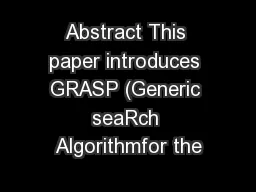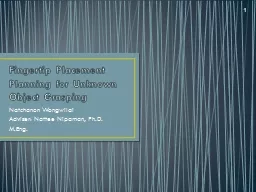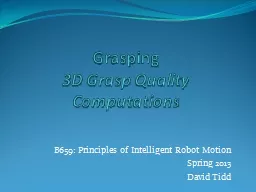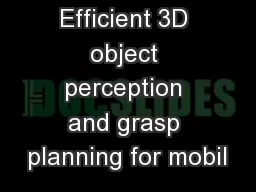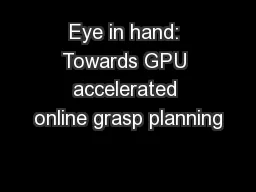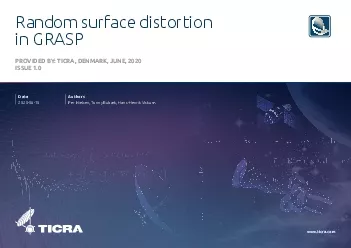PDF-Abstract This paper introduces GRASP (Generic seaRch Algorithmfor the
Author : celsa-spraggs | Published Date : 2016-06-09
those in 2 9 whose operation is orthogonal to thosedescribed hereThe remainder of this paper is organized in four sections In Section 2 we introduce the basics of
Presentation Embed Code
Download Presentation
Download Presentation The PPT/PDF document "Abstract This paper introduces GRASP (Ge..." is the property of its rightful owner. Permission is granted to download and print the materials on this website for personal, non-commercial use only, and to display it on your personal computer provided you do not modify the materials and that you retain all copyright notices contained in the materials. By downloading content from our website, you accept the terms of this agreement.
Abstract This paper introduces GRASP (Generic seaRch Algorithmfor the: Transcript
Download Rules Of Document
"Abstract This paper introduces GRASP (Generic seaRch Algorithmfor the"The content belongs to its owner. You may download and print it for personal use, without modification, and keep all copyright notices. By downloading, you agree to these terms.
Related Documents

